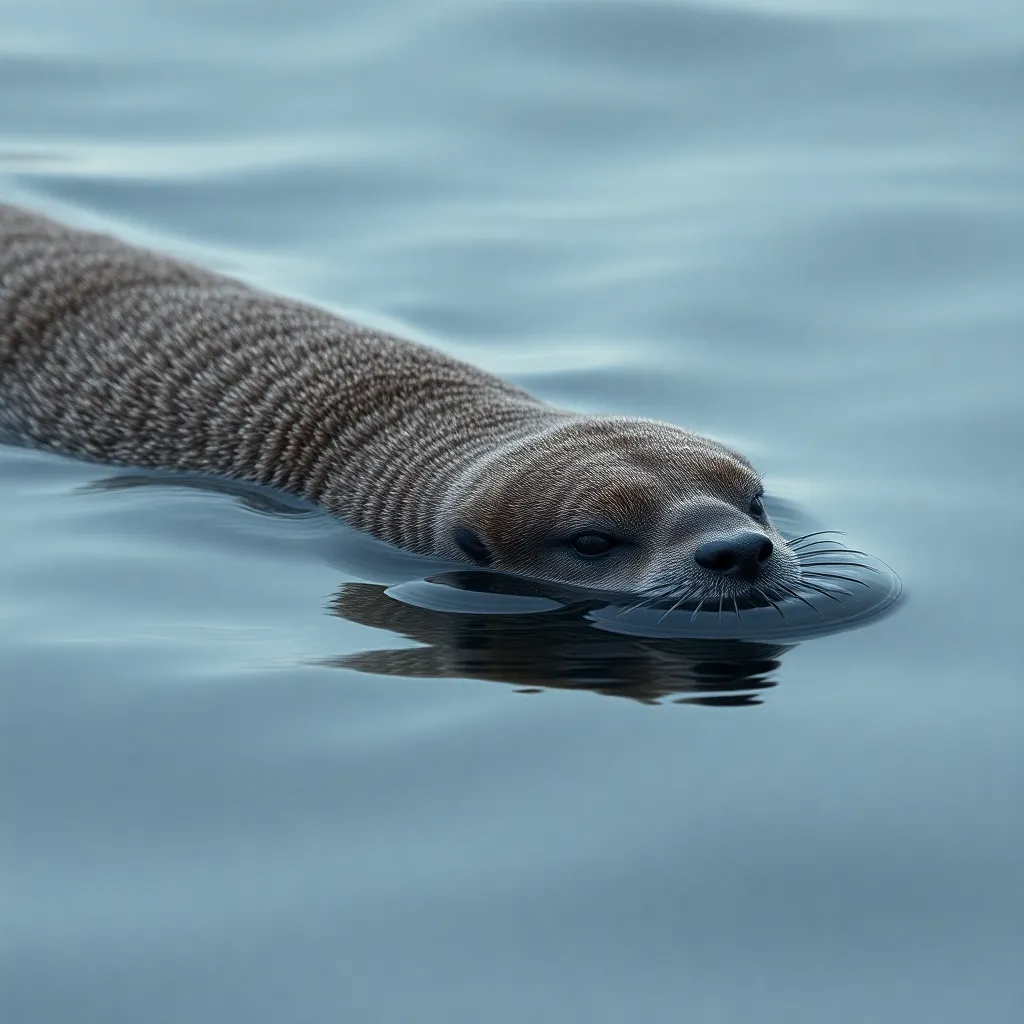The Selkie in Modern Culture: From Film to Fashion, Exploring the Myth’s Enduring Appeal
I. Introduction
The Selkie, a fascinating creature of mythology, is believed to be a seal that can shed its skin to become human. Originating from the rich folklore of Scotland and Ireland, this enchanting being embodies themes of transformation, love, and loss. The Selkie myth has transcended its traditional roots, finding a place in various cultural expressions across the globe.
The cultural significance of the Selkie stretches beyond its origins, resonating with themes of identity and belonging that are increasingly relevant today. This article aims to explore the enduring appeal of the Selkie myth in contemporary culture, examining its representations in film, literature, fashion, music, and art.
II. The Selkie Myth: A Brief History
The legend of the Selkie is deeply rooted in Scottish and Irish folklore, where it is often depicted as a creature that lives in the sea but has the ability to transform into a human. The stories often revolve around themes of love and loss, highlighting the tension between the Selkie’s dual existence in the ocean and the human world.
Key characteristics of the Selkie myth include:
- The Selkie’s ability to shed its seal skin and take human form.
- Emotional narratives that often involve tragic love stories.
- Connections to nature and the ocean, symbolizing freedom and escapism.
Over time, the Selkie myth has evolved, adapting to changing cultural landscapes and societal values. From ancient tales passed down through generations, the Selkie has transformed into a symbol of personal and environmental identity, resonating with modern audiences.
III. The Selkie in Film and Television
The Selkie myth has been vividly brought to life in various films and television shows. Notable examples include:
- The Secret of Roan Inish – A film that beautifully captures the essence of the Selkie myth through its storytelling and visual narrative.
- Song of the Sea – An animated feature that intertwines the Selkie legend with themes of family and loss, showcasing the power of folklore in modern cinema.
These portrayals reflect contemporary issues such as identity and belonging, emphasizing the struggle between different worlds. The role of animation and visual storytelling has revitalized the Selkie narrative, allowing audiences to experience the magic of this myth in new and engaging ways.
IV. Selkie Symbolism in Literature
The Selkie myth has also found its way into modern literature, with various authors exploring and reinterpreting its themes. Contemporary works often delve into:
- The concept of transformation, both literal and metaphorical.
- The themes of loss and longing, echoing the emotional depth of traditional Selkie tales.
- Ideas of freedom, where the Selkie symbolizes the desire to break free from societal constraints.
Authors like Julia Leigh and Seamus Heaney have contributed to the resurgence of Selkie stories, weaving their narratives into broader discussions of identity and belonging in today’s world.
V. The Influence of the Selkie in Fashion
The Selkie myth has also inspired contemporary fashion trends, particularly those that draw on oceanic themes and sustainable practices. Designers are incorporating Selkie elements into their collections, reflecting the myth’s connection to nature. Key influences include:
- Ocean-inspired designs featuring flowing fabrics and aquatic colors.
- Sustainable fashion practices that honor the environment, echoing the Selkie’s connection to the sea.
Brands like Selkie have embraced the myth, creating collections that celebrate the whimsical and ethereal qualities of the Selkie legend. This relationship between mythology and personal expression highlights how fashion can serve as a medium for storytelling and cultural reflection.
VI. The Selkie in Music and Art
Musicians and artists continue to draw inspiration from the Selkie myth, capturing its essence through various forms of creative expression. Artists such as Lisa Hannigan and Hozier have incorporated Selkie themes into their music, exploring ideas of love, loss, and nature.
Visual artists also depict the Selkie in their works, often portraying the duality of its existence. Folk music and contemporary genres keep the myth alive, allowing new generations to connect with these age-old stories in fresh and meaningful ways.
VII. The Selkie’s Appeal in Modern Society
The Selkie myth resonates with modern audiences, reflecting themes of escapism and connection to nature. In a world increasingly focused on technology and urban living, the Selkie serves as a reminder of our bond with the natural world.
The relevance of the Selkie myth in today’s discussions on identity and belonging cannot be overstated. As individuals navigate their personal and cultural identities, the Selkie symbolizes the search for a place where one truly belongs. Additionally, the Selkie myth has become a powerful symbol for environmental awareness, highlighting the fragility of our oceans and marine life.
VIII. Conclusion
The enduring appeal of the Selkie myth across various cultural mediums showcases its significance in contemporary life. From film and literature to fashion and music, the Selkie continues to inspire and captivate audiences. As we reflect on the importance of myth in our lives, the Selkie stands as a testament to the power of storytelling, reminding us of our intricate relationship with nature and the timeless struggles of identity and belonging.



